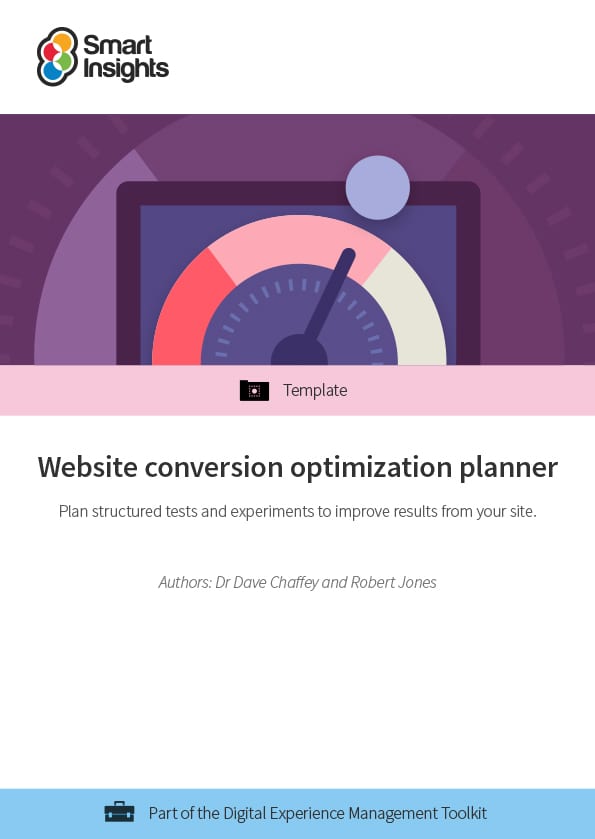Website conversion optimization planner
Plan structured tests and experiments to improve results from your site
How will this template help me?
Many sites are only occasionally updated, but companies who are serious about getting the best returns from their websites have a structured programme of testing. Use our conversion optimization planner with our Improving results from your website guide to help plan, manage, and review your tests.
Who is this template for?
This template has been created for marketers of all levels to use, in a joint effort with their development team when planning, managing, and reviewing website tests. Marketers who will find this template particularly useful include:
- E-commerce marketers looking to improve conversion rate
- CRO consultants
- B2B marketers, especially those that convert their leads on-site
- Small business owners who manage their website and need to increase the number of leads or conversions
How is optimization planner structured?
There are two documents included in the download:
- Test plan/Review sheet (Word) - This is a change request form to help define the requirements for a test.
- Test planning time (Excel) - This summarizes all the tests and the results.
Latest updates
This content is evergreen and has been updated to our newest branded document style to ease readability.
Resource Details
- Author: Dr. Dave Chaffey
- Format: Word and Excel templates for you to amend
- Related guide: Making the case for business investment in digital
About the author
Dr. Dave Chaffey
 Dave is co-CEO and co-founder of Smart Insights. He is editor of the 100 templates, ebooks and courses in the digital marketing resource library created by our team of 25+ Digital Marketing experts. Our resources used by our premium members in more than 80 countries to Map, Plan and Manage their digital marketing.
Dave is co-CEO and co-founder of Smart Insights. He is editor of the 100 templates, ebooks and courses in the digital marketing resource library created by our team of 25+ Digital Marketing experts. Our resources used by our premium members in more than 80 countries to Map, Plan and Manage their digital marketing.
For his full profile, or to connect on LinkedIn or other social networks, see the About Dave Chaffey profile page on Smart Insights. Dave is author of 5 bestselling books on digital marketing including Digital Marketing Excellence and Digital Marketing: Strategy, Implementation and Practice. In 2004 he was recognised by the Chartered Institute of Marketing as one of 50 marketing ‘gurus’ worldwide who have helped shape the future of marketing.

 Paid membership is required
Paid membership is required








